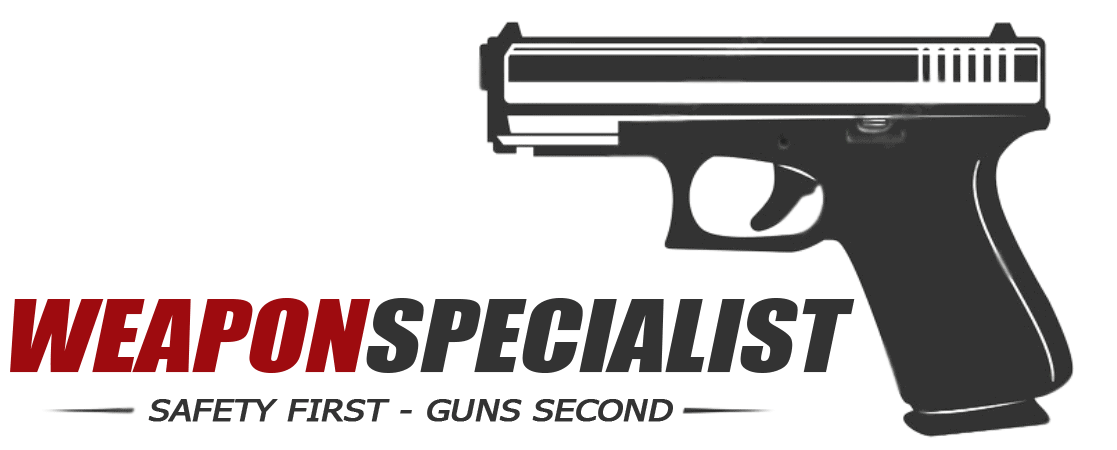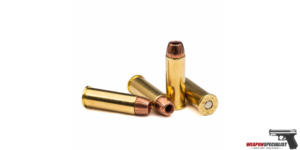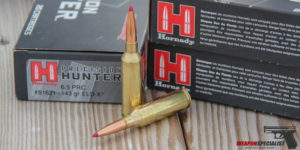When it comes to iconic handguns, the Beretta M9 vs 92FS stand out as timeless classics in the firearms world. As enthusiasts and gun aficionados, Weapon Specialists find ourselves captivated by the allure of these legendary weapons.
The Beretta M9 and 92FS have become synonymous with reliability, accuracy, and a rich history that spans over three decades.
With their distinctive design and widespread adoption by military and law enforcement agencies worldwide, the M9 and 92FS have cemented their place as symbols of excellence in the realm of semi-automatic pistols.
Join us as we delve into the remarkable features and enduring legacy of the Beretta M9 and 92FS.
History of the Beretta 92FS and M9
The Beretta 92FS and M9 are two of the most popular handguns in the world. The Beretta 92FS is a civilian version of the M9, which is the standard-issued handgun of the United States military. The history of both handguns is intertwined, and they share many similarities.
The Beretta 92FS was introduced in 1975 and was designed to be an improvement over the previous Beretta models, M1923 and M1951, and the Model 84. The complete design was passed back in 1975, and its manufacture started in 1976.

The 92FS quickly became popular among civilians due to its reliability, accuracy, and ease of use. The handgun has been used by law enforcement agencies around the world, including the United States Secret Service.
The Beretta M9, on the other hand, was adopted by the United States military as their service pistol in 1985. The M9 is a variant of the Beretta 92FS and was designed specifically to meet the needs of the US military.
The M9 replaced the M1911A1 as the primary sidearm of the US military. The M9 has been used by the US military in various conflicts, including the Gulf War, the War in Afghanistan, and the Iraq War.

Both the Beretta 92FS and M9 have a long and storied history. They are reliable, accurate, and easy to use handguns that have been used by law enforcement agencies and military forces around the world.
The Beretta 92FS is a civilian version of the M9, and both handguns share many similarities. The differences between the two handguns are minor, but they are important for those who use them.
Quick Comparison
| Features | Beretta 92FS | Beretta M9 |
|---|---|---|
| Caliber | 9mm | 9mm |
| Capacity | 15+1 (Standard), 20+1 (Extended) | 15+1 (Standard), 17+1 (Extended) |
| Barrel Length | 4.9 inches | 4.9 inches |
| Overall Length | 8.5 inches | 8.5 inches |
| Weight (unloaded) | 33.3 ounces | 33.9 ounces |
| Action | Double/Single | Double/Single |
| Safety | Ambidextrous | Ambidextrous |
| Sights | 3-Dot | 3-Dot |
| Grip | Checkered Plastic | Checkered Plastic |
| Finish | Blued or Stainless Steel | Blued or Phosphate |
| Magazine Compatibility | Compatible with M9 Magazines | Compatible with 92FS Magazines |
Design and Features
1. Beretta 92FS Design and Features
The Beretta 92FS is a semi-automatic pistol with a double/single action. It has a 15+1 round capacity and is chambered in 9x19mm Parabellum. It has a barrel length of 4.9 inches, an overall length of 8.5 inches, and a height of 5.5 inches.
The pistol weighs 32.6 ounces and has a width of 1.35 inches. The 92FS has a black synthetic grip and a black matte finish. The 92FS features fixed sights with 3 dots.

The front sight is a blade, while the rear sight is a notched bar attached to the slide via a dovetail. The pistol has an ambidextrous safety, a reversible magazine release, and a decocking lever.
The 92FS also has a loaded chamber indicator, which is a small red dot on the extractor that protrudes when a round is in the chamber.
2. Beretta M9 Design and Features
The Beretta M9 is the military version of the 92FS. It has a 15+1 round capacity and is chambered in 9x19mm Parabellum. It has a barrel length of 4.9 inches, an overall length of 8.5 inches, and a height of 5.5 inches.
The pistol weighs 33.3 ounces and has a width of 1.5 inches. The M9 has a synthetic grip and a blued finish. The M9 features fixed combat sights consisting of an integral front blade and a rear notched bar attached to the slide via a dovetail.

The pistol has an ambidextrous safety, a reversible magazine release, and a decocking lever. The M9 also has a loaded chamber indicator, which is a small red dot on the extractor that protrudes when a round is in the chamber.
Overall, both the 92FS and M9 have similar features and designs. The main differences between the two are the markings on the slide and frame, the finish, and the sights.
The M9 has military markings, whereas the 92FS has a roll mark on the frame that warns the user to “Read Manual Before Use.” The 92FS has a black matte finish, while the M9 has a blued finish. Finally, the 92FS has 3-dot sights, while the M9 has combat sights.
Performance and Accuracy
When it comes to performance and accuracy, both the Beretta 92FS and M9 have a lot to offer. However, there are some key differences between the two that are worth noting.
1. Beretta 92FS Performance and Accuracy
The Beretta 92FS is known for its exceptional accuracy and reliability. It has a longer barrel than many other handguns, which helps to improve accuracy.
Additionally, the 92FS has a low bore axis, which reduces felt recoil and allows for faster follow-up shots. This combination of accuracy and quick target acquisition makes the 92FS a popular choice among competitive shooters.
One thing to keep in mind is that the 92FS has a double-action trigger pull that can be heavy and long. This can make it more challenging to shoot accurately, especially for those with smaller hands. However, with practice, most shooters can learn to manage the trigger and achieve excellent accuracy with the 92FS.
2. Beretta M9 Performance and Accuracy
The Beretta M9 is the military version of the 92FS, and as such, it is designed to meet strict performance and accuracy standards. Like the 92FS, the M9 has a long barrel and low bore axis that help to improve accuracy and reduce recoil. Additionally, the M9 has a reputation for being extremely reliable, even in harsh environments.
One potential downside of the M9 is that it has a heavy trigger pull. This can make it more difficult to shoot accurately, especially for those with less experience.
However, the M9’s trigger can be modified to improve performance, and with practice, most shooters can learn to manage the trigger and achieve excellent accuracy with the M9.

Overall, both the Beretta 92FS and M9 are highly accurate and reliable handguns that are well-suited for a variety of shooting applications.
While there are some differences in their design and performance, both models are capable of delivering exceptional accuracy and performance when in the hands of a skilled shooter.
Ergonomics and Handling
When it comes to ergonomics and handling, the Beretta 92FS and the M9 share many similarities. Both firearms have a double-stack magazine that allows for a higher capacity of ammunition, and both have a barrel length of 4.9 inches.
Additionally, both the 92FS and the M9 have ambidextrous safety/ decocker levers and a reversible magazine release, making them ideal for left-handed shooters.
1. Beretta 92FS Ergonomics and Handling
The 92FS has a comfortable grip that is easy to hold and control. The grip is made of a black synthetic material that provides a non-slip surface, allowing the shooter to maintain a firm hold on the firearm.
The 92FS also has a low bore axis, which helps to reduce felt recoil and improve accuracy. The 92FS has a slide-mounted safety/decocker, which is easy to manipulate with the thumb of the shooting hand.
One potential drawback of the 92FS is the location of the magazine release. The release is located on the grip of the firearm, which may require the shooter to adjust their grip to release the magazine.
However, the reversible magazine release can be switched to the right side of the firearm, making it easier for left-handed shooters to operate.
2. Beretta M9 Ergonomics and Handling
The M9 has a similar grip to the 92FS but with a few key differences. The grip is made of synthetic material and has a checkered texture, providing a secure grip for the shooter.
Additionally, the M9 has a straighter backstrap than the 92FS, which may be more comfortable for some shooters. The M9 also has a frame-mounted safety/decocker, which can be easier to manipulate for shooters with smaller hands.
One potential drawback of the M9 is the location of the slide-mounted safety. The safety is located near the rear of the slide, which may make it more difficult to manipulate for shooters with smaller hands. However, the M9 has a larger slide release lever, which can be easier to operate for some shooters.
Maintenance and Upgrades
When it comes to maintaining and upgrading the Beretta 92FS and M9, there are some similarities and differences between the two models.
1. Beretta 92FS Maintenance and Upgrades
The Beretta 92FS is known for its reliability, but like any firearm, it requires regular maintenance to ensure it continues to function properly.
Some basic maintenance tasks include cleaning the barrel, lubricating the slide and frame, and checking the magazine spring for wear. The 92FS is also known for having a heavy double-action trigger pull, but this can be improved with an aftermarket trigger kit.

For those looking to upgrade their 92FS, there are a variety of options available. One popular upgrade is to replace the factory sights with night sights for improved accuracy in low-light conditions.
Another option is to replace the factory grips with aftermarket grips for a more comfortable and secure grip. Additionally, there are aftermarket barrels and slides available for those looking to customize their 92FS.
2. Beretta M9 Maintenance and Upgrades
Like the 92FS, the M9 requires regular maintenance to ensure it continues to function properly. Some basic maintenance tasks include cleaning the barrel, lubricating the slide and frame, and checking the magazine spring for wear. The M9 also has a heavy double-action trigger pull, but this can be improved with an aftermarket trigger kit.
For those looking to upgrade their M9, there are also a variety of options available. One popular upgrade is to replace the factory sights with night sights for improved accuracy in low-light conditions.
Another option is to replace the factory grips with aftermarket grips for a more comfortable and secure grip. Additionally, there are aftermarket barrels and slides available for those looking to customize their M9.
Cost and Availability
1. Beretta 92FS Cost and Availability
The Beretta 92FS is a popular handgun that is widely available in the United States. It is sold by many major retailers, including Cabela’s, Bass Pro Shops, and Academy Sports + Outdoors.
The price of a new Beretta 92FS typically ranges from $600 to $700, depending on the specific model and any additional features. Used Beretta 92FS handguns can also be found for sale online and in gun stores.
The price of a used 92FS can vary widely depending on its condition, age, and any modifications that have been made to it. On average, a used Beretta 92FS can be purchased for around $500.
2. Beretta M9 Cost and Availability
The Beretta M9 is the military version of the 92FS and is used by the United States Armed Forces. It is not sold directly to civilians, but surplus M9 handguns can be found for sale on the civilian market.
The price of a surplus M9 can vary widely depending on its condition and any additional accessories that come with it. Surplus M9 handguns are typically less expensive than new 92FS handguns.
However, they may have been used extensively by the military and may show signs of wear and tear. On average, a surplus M9 can be purchased for around $500.
Overall, the Beretta 92FS is more widely available and can be purchased new from many major retailers. The M9, on the other hand, is not sold directly to civilians and may be more difficult to find for sale.
FAQs Beretta 92FS and M9
Q: What is the main difference between the Beretta 92FS and M9?
A: The main difference between the Beretta 92FS and M9 lies in their intended users. The Beretta 92FS is a civilian variant of the M9, which is the military designation for the same firearm.
While they share similar designs and features, the M9 typically meets specific military standards and may have slight variations, such as a different finish or magazine capacity.
Q: Are the magazines interchangeable between the Beretta 92FS and M9?
A: Yes, the magazines for the Beretta 92FS and M9 are interchangeable. They both use the same 9mm caliber and have compatible magazine designs, allowing users to interchange magazines between the two firearms.
Q: Can I use aftermarket parts and accessories on the Beretta 92FS and M9?
A: Yes, the Beretta 92FS and M9 have a wide range of aftermarket parts and accessories available. These include grips, sights, holsters, magazine extensions, and more. However, it’s important to ensure that the aftermarket parts are compatible with your specific model and variant.
Q: What is the typical magazine capacity for the Beretta 92FS and M9?
A: The standard magazine capacity for the Beretta 92FS is 15 rounds, while the M9 typically comes with a 15-round magazine as well. However, extended magazines with higher capacities, such as 20 rounds for the 92FS and 17 rounds for the M9, are also available.
Q: Are the Beretta 92FS and M9 reliable handguns?
A: Yes, both the Beretta 92FS and M9 are renowned for their reliability. They have been extensively tested and used by military, law enforcement, and civilian shooters worldwide for several decades. Their robust design and solid construction contribute to their reputation for reliability and durability.
Q: Can I customize the Beretta 92FS and M9?
A: Yes, the Beretta 92FS and M9 offer customization options. You can modify them with various aftermarket parts and accessories to suit your preferences and needs. These modifications can include changes to the grips, sights, trigger, and more, allowing you to personalize your firearm to a certain extent.
Conclusion for Beretta 92FS and M9
The Beretta 92FS and M9 are both excellent firearms that share many similarities. They are both reliable, and accurate, and have been used extensively by the military and law enforcement agencies around the world.
After analyzing the differences between these two firearms, it is clear that the choice between them comes down to personal preference.
One of the main differences between the 92FS and the M9 is the dust cover angle. While this may seem like a minor detail, it can affect the way the firearm feels in the hand and how it handles recoil.
Another difference is the markings on the slide. The M9 has a unique marking that designates it as a military firearm, while the 92FS does not.
Overall, both firearms are excellent choices for anyone in the market for a reliable and accurate handgun. The decision between the two ultimately comes down to personal preference and the specific needs of the user.
Whether you choose the 92FS or the M9, you can be confident that you are getting a high-quality firearm that will serve you well for years to come.
Last Updated on October 28, 2023 by






